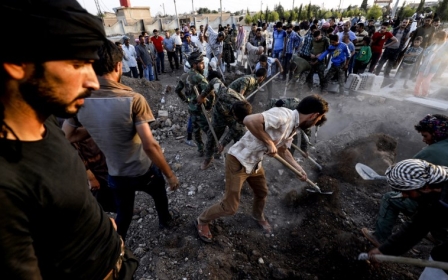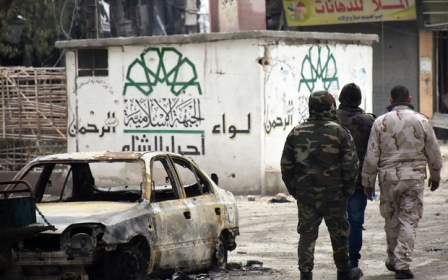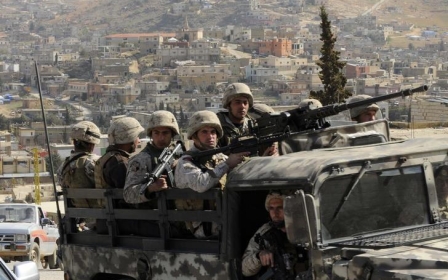Assad forces strike Damascus suburb, day after ceasefire declared

The Syrian government carried out a series of air raids on one of the last rebel strongholds near Damascus on Sunday, a monitor said, a day after it declared a ceasefire in parts of the besieged enclave.
The Syrian army on Saturday announced a halt in fighting for parts of Eastern Ghouta, a rebel-held region on the outskirts of the capital that has been ravaged by the six-year conflict.
"Regime warplanes targeted the area of Ain Terma with at least six strikes since early morning, and two raids were carried out on and around the city of Douma," the Syrian Observatory for Human Rights monitoring group said.
The UK-based monitor, which relies on sources in Syria for its information, did not report any casualties.
Government shelling also hit the outskirts of the town of Jisreen on Sunday, the Observatory said, after government artillery and rocket fire on areas including Ain Terma and the town of Harasta on Saturday after the ceasefire started.
President Bashar al-Assad's forces have surrounded the Eastern Ghouta region for more than four years, and government forces have regularly targeted the area.
Assad's forces have for weeks been fighting rebels on the outskirts of Ain Terma, which links Eastern Ghouta to opposition-held parts of the Damascus district of Jobar.
Observatory head Rami Abdel Rahman said no Islamic militants were present in the areas targeted by government bombardment.
The army announced a halt in fighting in areas of Eastern Ghouta on Saturday from midday local time but did not say which areas exactly would be included.
The ceasefire announcement came after government ally Russia said it had reached a deal with "moderate" rebels on the boundaries and policing of the safe zone.
It said the sides had also agreed "routes to supply humanitarian aid to the population and for free movement of residents".
But no rebel group yielding influence in Eastern Ghouta said they had signed that agreement.
The rebel enclave is in one of four proposed "de-escalation zones" designated in a deal reached by government allies Iran and Russia and rebel backer Turkey in May.
But the accord has yet to be fully implemented over disagreements on policing the safe zones.
A ceasefire was implemented in another "de-escalation zone" in southern Syria on 9 July, but none has so far been announced for the northwestern province of Idlib or parts of the central province of Homs.
Pro-government media outlets reported that Lebanon's Hezbollah and the Syrian Army had advanced against Sunni militants on Saturday, in a bid to drive them out of their last foothold along the Syrian-Lebanon border.
The operation has targeted Sunni Muslim rebels from the former Nusra Front, a group that was aligned to al-Qaeda and which has controlled the barren, mountainous zone of Juroud Arsal.
A military media unit run by Hezbollah said its forces captured Jwar al-Sheikh, Wadi Kriti and other areas in the southern part of Juroud Arsal.
Syrian warplanes struck militant positions on the Syrian side of the border, near the Syrian town of Fleita, it said.
A former al-Qaeda affiliate and a leading rebel group agreed on Friday to end days of fighting over one of the last major parts of Syria out of the government's control.
The clashes in Syria's Idlib province in the country's northwest pit the Hayat Tahrir al-Sham (HTS) militants against Ahrar al-Sham rebels, who are supported by Turkey and some Gulf countries.
HTS is dominated by the Fateh al-Sham faction, which was previously known as al-Nusra Front before renouncing its ties to al-Qaeda.
The factions were once allies and fought alongside each other to capture most of Idlib province from the Syrian government in 2015.
But tensions between the two were exacerbated, analysts say, by HTS's fears of a plan to expel the internationally designated terror group from the province.
More than 330,000 people have been killed in Syria since its conflict broke out in March 2011 with anti-government protests.
Middle East Eye propose une couverture et une analyse indépendantes et incomparables du Moyen-Orient, de l’Afrique du Nord et d’autres régions du monde. Pour en savoir plus sur la reprise de ce contenu et les frais qui s’appliquent, veuillez remplir ce formulaire [en anglais]. Pour en savoir plus sur MEE, cliquez ici [en anglais].




